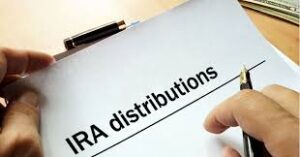
IRA Distribution Exceptions –
New coronavirus-related distribution exception
What changed: A coronavirus-related distribution is one that is made after January 1, 2020 and before December 31, 2020 for an individual or their spouse who is diagnosed with COVID-19 or if they experienced adverse financial consequences caused by the coronavirus, such as being laid off, having hours reduced, being quarantined or furloughed.
Up to $100,000 can be withdrawn from a retirement, exempt from the 10% penalty tax if the distribution is taken before age 59.5. A retirement plan can rely on a participant’s written statement that he or she meets the conditions.
The distribution will be automatically spread out over the next three years from a tax perspective. However, you can opt to treat the entire distribution as taxable in 2020.
This distribution can come from an IRA, which typically does not allow plan loans. You can repay the coronavirus-related distribution for up to three years after the day of distribution. The repayment would be treated as a rollover in 2020, so you might have to file an amended tax return for 2020 if you repay in a few years to get your taxes back.
The impact: For many people, this will open up a large distribution amount from IRAs, which usually don’t allow for loans. As people are laid off, experience decreased income due to the economic changes, or are otherwise financially impacted by the coronavirus, they can tap into their retirement accounts without penalty tax and repay it over a few years. The ability to repay the retirement funds is very important. You can use the funds for a short-term need, and you can repay it, so you don’t wipe out your long-term retirement funding.
https://www.forbes.com/sites/jamiehopkins/2020/04/10/5-ways-the-cares-act-impacts-retirement-planning/#27d53b30676a

